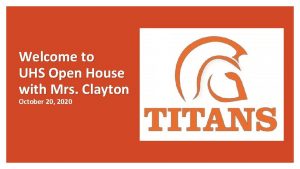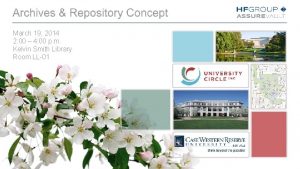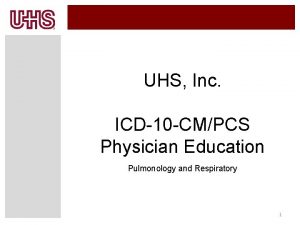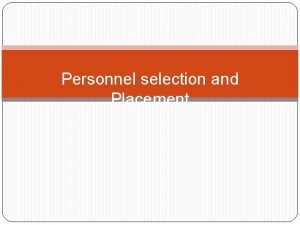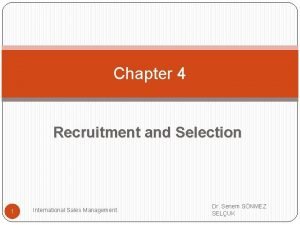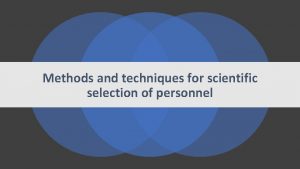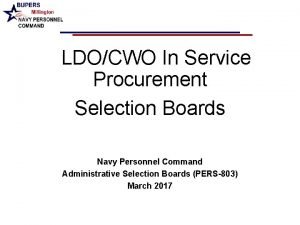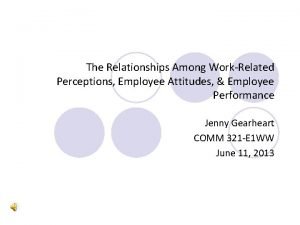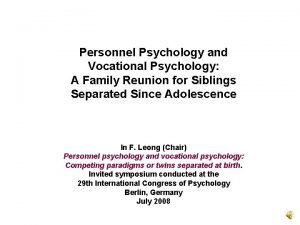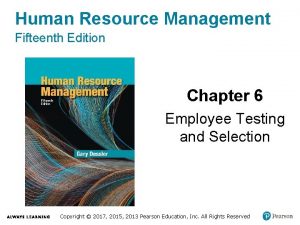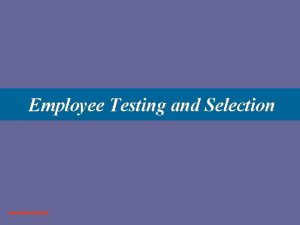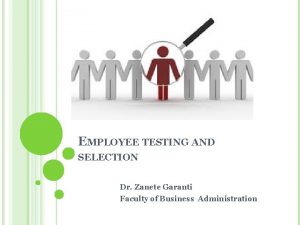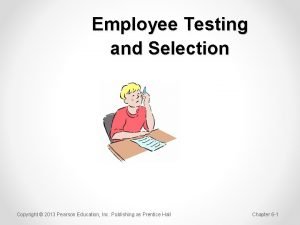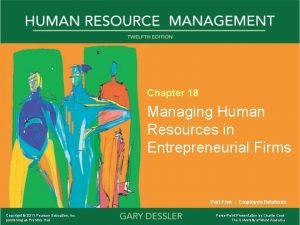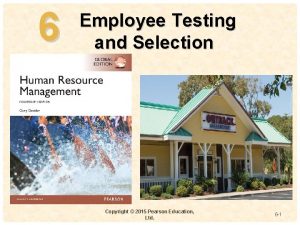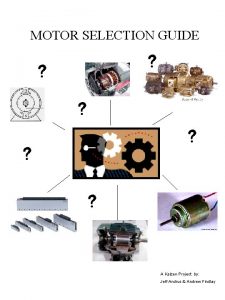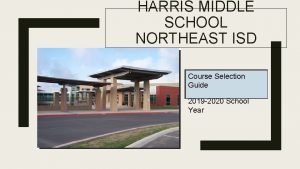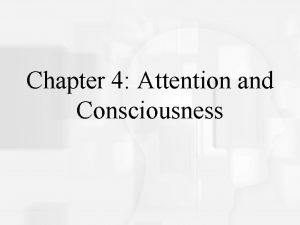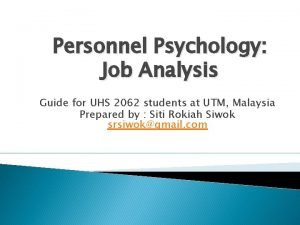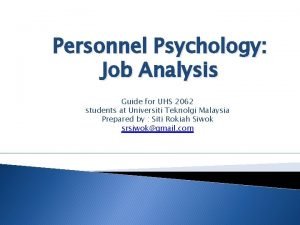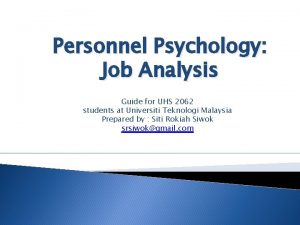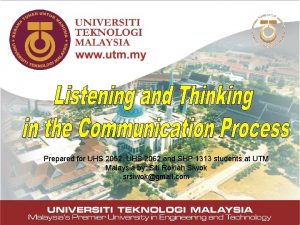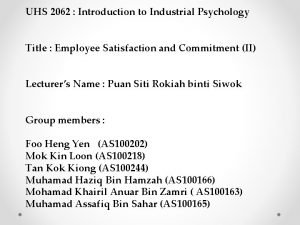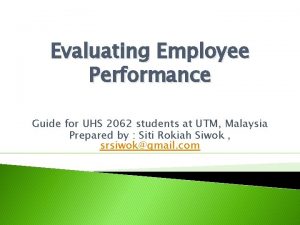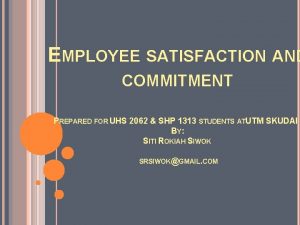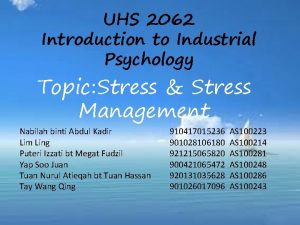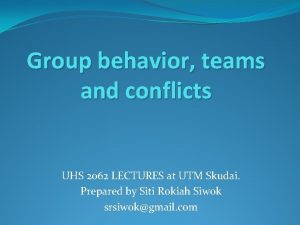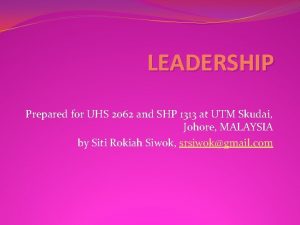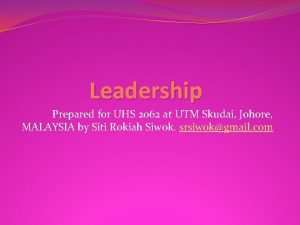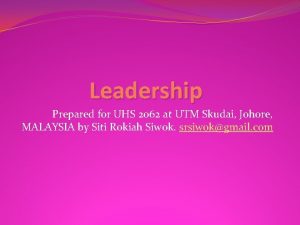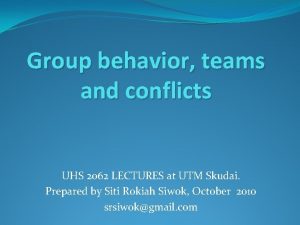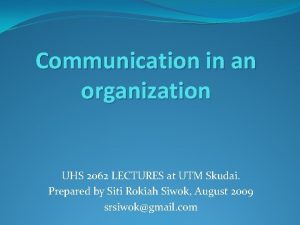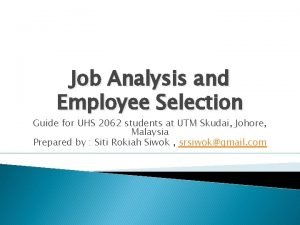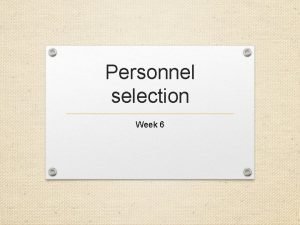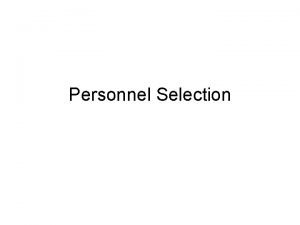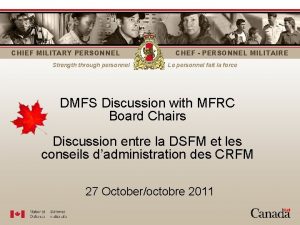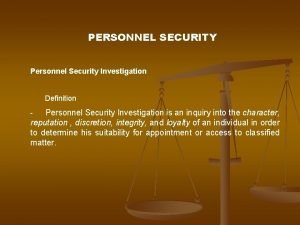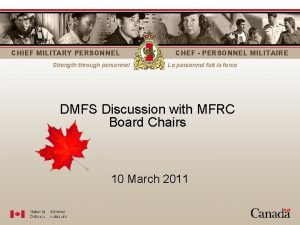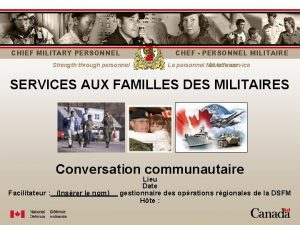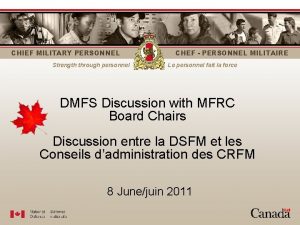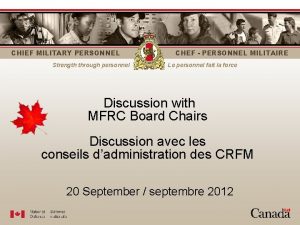Personnel Psychology Employee Selection Guide for UHS 2062









































- Slides: 41

Personnel Psychology: Employee Selection Guide for UHS 2062 students at UTM, Malaysia Prepared by : Siti Rokiah Siwok , srsiwok@gmail. com

Recruitment � Revision: Job analysis is the cornerstone of personnel selection. Unless a complete an accurate picture of a job is done, it would be difficult to select excellent employees. � During the job analysis process, in addition to identifying the important task and duties, it is crucial to identify knowledge, skills and abilities needed to perform the job.

Recruitment � Methods used to select employees must be directly tied to the results of the job analysis. � Every essential knowledge, skill and ability identified in the job analysis should be tested and every test must relate to the job analysis.

Recruitment � Recruitment is attracting the right people for a certain job. � Two types of recruitment : ◦ Internal ◦ External There is a need to balance between internal and external recruitment.

Effective Recruitment Methods Should be: � Valid : A valid selection test is based on a job analysis (content validity), predicts work behaviour (criterion validity) and measures the construct it purpots to measure (construct validity). � Cost effective : in all terms, that is to purchase or create, to administer and to score.

Effective Recruitment Methods Should: � Get the attention of the public � Screen unqualified applicants � Motivate qualified people to apply � Timely � Reduce the chance of legal challenge

Recruitment Methods � Formal ◦ ◦ ◦ ◦ or Direct Media advertisements Point of purchase Direct mail Employment agencies College recruiters Computer databases Special events Employee referral programs � Informal or Indirect ◦ Situation-wanted ads ◦ Direct applications ◦ Employee referrals 7

Special Populations � The retired � The mentally or physically challenged � Ex-convicts � Current convicts � People on welfare assistance � Employees in other organizations � People in foreign countries � Temporary employees 8

Effective Employee Selection Techniques

Optimal Employee Selection Should be: � Valid ◦ Based on a job analysis (content validity) ◦ Predict work-related behavior (criterion validity) � Able to Reduce the Chance of a Legal Challenge ◦ ◦ Face valid Don’t invade privacy Don’t intentionally discriminate Minimize adverse impact � Cost Effective ◦ Cost to purchase/create ◦ Cost to administer ◦ Cost to score 10

Effective Employee Selection Techniques � Interviews � Résumé � References � Testing

Employee Selection Techniques: Interviews

Interviews � Structure ◦ Structured ◦ Unstructured ◦ Semi structured � Style ◦ ◦ ◦ One to one Serial Return Panel group � Medium ◦ Face to face, telephone, video conference, in writing etc

Unstructured Interviews are Not Optimal � Because they: Unreliable Not valid Legally problematic Are not job related Rely on intuition, “amateur psychology, ” and talk show methods ◦ Suffer from common rating problems ◦ ◦ ◦ �Primacy �Contrast �Similarity �Range restriction (e. g. , leniency, strictness, central tendency) 14

Examples of Common Unstructured Interview Questions � Where do you see yourself five years from now? � What are your greatest strengths? � What are your greatest weaknesses? � What subject did you most enjoy in college? � Why should I hire you? � Why are you interested in this job? 15

Structured Interviews are Optimal � Because ◦ ◦ ◦ they are : Reliable Valid Are based on a job analysis Ask the same questions of each applicant Have a standardized scoring procedure Not as prone to legal challenge 16

Goals of Structured Interview � Understand the Applicant ◦ Clarify and confirm resume information ◦ Obtain new information � Predict Job Performance � Predict Organizational Fit ◦ Ask questions focused on past behavior ◦ Ask questions focused on knowledge and skills ◦ Ask questions focused on future behavior ◦ Use several interviewers ◦ Combine interview impression with test scores � Sell the Organization to the Applicant ◦ Provide information about the position/organization ◦ Answer the applicant’s questions 17

Creating the Structured Interview 1. 2. 3. 4. 5. Conduct a thorough job analysis Determine best way to measure each KSAO Construct Questions Determine rating anchors for each question Choose two or more members for the interview panel 18

Employee Selection Techniques: Résumés

Résumés � Résumés are summaries of an applicant’s professional and educational background. � Commonly asked by employers but little is known about the value of predicting employee performance. � It is unclear how much predictive value résumés have.

Résumés � Résumés may not predict performance partly because they are meant to “advertise” an applicant; making the “strengths of the applicant more obvious and weaknesses hard to find”. � Result: many résumés contain inaccurate information. � Aamodt and Williams (2005) found that 25% of résumés contained inaccurate information. � No best way to write résumés.

More of Employee Selection Techniques

References and Recommendations � Common belief in psychology is : the best predictor of future performance is past performance. � Verifying previous employment is not difficult but DIFFICULT to ascertain the QUALITY of previous performance.

References and Recommendations � Terms : ◦ Reference checks is the process of confirming the accuracy of information given by the applicant. ◦ A reference is the expression of an opinion, either orally or written regarding applicant’s ability, previous performance, work habits, character, work habits etc. ◦ A letter of recommendation is a letter expressing an opinion regarding an applicant’s ability etc.

References and Recommendations � Reasons � Issues, ethics and considerations � Negligent � Potential reference to be charged with slander or a legal action taken.

Using Applicants’ Training and Education � Using applicant Training and Education ◦ Min level of education and training ◦ Inconsistent results regarding validity

� Job Using Applicant’s Knowledge about the Job applied for performance can also be predicted using applicants’ knowledge; hence job knowledge tests are designed to measure how much a person knows about a job. � Examples : computer programming knowledge etc � Standardised tests are also available. � Excellent content and criterion validity.

Using Applicants’ Ability � Ability tests taps the extent to which an applicant can learn or perform a job-related skill. Upon hire, new employees will be taught the necessary job skills and knowledge. o Ability tests are used primarily for occupations in which applicants are not expected to know how to perform the job at the time of hire. Eg: police officers, fire fighters, military personnel.

Using Applicants’ Ability: Cognitive Ability: �Includes oral and written comprehension, oral and written expression, numerical etc. �Important for professional, clerical and supervisory jobs. �Meta-analyses suggests that cognitive ability is one of the best predictors of performance across all jobs, but job-specific meta-analyses raise doubts about the assumptions. �E. gs of cognitive ability test : Wonderlic Personnel Test, Miller Analogies Test and Quick Test

Using Applicants’ Ability Other ability tests are : Perceptual Ability Psychomotor Ability Physical Ability

Using Applicant’s Skills � This method measures the extent to which an applicant has already a job-related skill. � Two most common methods are work sample and assessment centre. � With work-sample, the applicant performs actual job-related tasks; excellent selection tools and has high validity. Applicants also see the direct connection.

Assessment Centers � An assessment centre is a selection technique characterized by the use of multiple assessment methods that allow multiple assessors to actually observe applicants perform simulated tasks. � Major advantage: ◦ Assessment methods are all job related and multiple assessors help guard against some types of biases.

Using Personality, Interest and Character � Personality Inventories � Interest inventories � Integrity Tests � Graphology

Personality Inventories � Increasingly popular as an employee selection method. � Falls into 2 categories based on their intended purpose: ◦ 1) normal personality ◦ 2) abnormal personality (psychopathology)

Personality Inventories: Normal Personality � Tests of normal personality measures traits exhibited by normal individuals in everyday life. Eg. of such traits are: extraversion, shyness, assertiveness and friendliness. � Myers-Briggs Type Indicator � Edwards Personal Preference Schedule � 16 PF � Minnesota Multiphasic Personality Inventory (MMPI) � Many more….

Personality Inventories: Normal Personality � There are 100 s of personality inventories, there is a general agreement that most personality traits can be placed into one of the five personality dimensions, known as the “BIG FIVE” or the five factor model. ◦ ◦ ◦ Openness to experience (bright and inquisitive) Conscientiousness (reliable, dependable) Extraversion (outgoing, friendly) Agreeableness (works well with others) Emotional stability

� Tests Personality Inventories: Psychopathology of abnormal personality determine whether individuals have serious psychological problems such as depression, bipolar disorder and schizophrenia. � Seldom used in IOP unless required as part of medical examinations.

Interest Inventories � Designed to tap vocational interests. � Most commonly used is the Strong Interest Inventory(SII) which asked individuals to indicate whether they like or dislike 325 items such as bargaining, repairing electrical wire and taking responsibility. � Answers provide profile of the person.

Integrity tests � Informs the employer of the applicant’s honesty; such as the probability that an applicant will steal money or merchandise � One study estimates that 50% of employees access to cash steal from their employers (Wimbush and Dalton, 1997).

Graphology � Handwriting analysis. � Used 8% in the UK and 75% in France. � The idea behind it is that the way people write reveals their personality, which in turn indicates work performance.

Main references: � Aamodt, M. G ( 2010). Industrial/Organizational Psychology. An Applied Approach. ( 6 th Ed) USA: Wadsworth � Spector, P. E. ( 2008). Industrial and Organizational Psychology (5 th ed). USA: Wiley � Employee Recruitment (2010). Cengage Learning
 Da pamphlet 710-2-1
Da pamphlet 710-2-1 Uhs biomed
Uhs biomed Ured za upravljanje u hitnim situacijama
Ured za upravljanje u hitnim situacijama Uhs cwru
Uhs cwru Uhs pulmonology
Uhs pulmonology Unionville high school guidance
Unionville high school guidance Uhs hematology
Uhs hematology Personnel selection meaning
Personnel selection meaning Recruitment and selection of sales personnel
Recruitment and selection of sales personnel Scientific
Scientific Differences between recruitment and selection
Differences between recruitment and selection European personnel selection office
European personnel selection office Personnel selection board
Personnel selection board Employee attitudes and employee performance
Employee attitudes and employee performance Personnel psychology definition
Personnel psychology definition Chapter 6 employee testing and selection ppt
Chapter 6 employee testing and selection ppt Employee testing and selection
Employee testing and selection Employee testing and selection summary
Employee testing and selection summary Employee testing and selection
Employee testing and selection Employee selection
Employee selection Managing human resources in small and entrepreneurial firms
Managing human resources in small and entrepreneurial firms Employee testing and selection
Employee testing and selection Balancing selection vs stabilizing selection
Balancing selection vs stabilizing selection Similarities
Similarities K selected
K selected Natural selection vs artificial selection
Natural selection vs artificial selection Artificial selection vs natural selection
Artificial selection vs natural selection Disruptive selection example
Disruptive selection example Logistic model of population growth
Logistic model of population growth Natural selection vs artificial selection
Natural selection vs artificial selection Two way selection and multiway selection in c
Two way selection and multiway selection in c Two way selection and multiway selection in c
Two way selection and multiway selection in c Mass selection
Mass selection Nisdtx course guide
Nisdtx course guide Fbisd high school course selection
Fbisd high school course selection Motor selection guide
Motor selection guide E2af
E2af Northwest isd course selection guide
Northwest isd course selection guide Early selection psychology
Early selection psychology Fspos vägledning för kontinuitetshantering
Fspos vägledning för kontinuitetshantering Typiska novell drag
Typiska novell drag Nationell inriktning för artificiell intelligens
Nationell inriktning för artificiell intelligens

